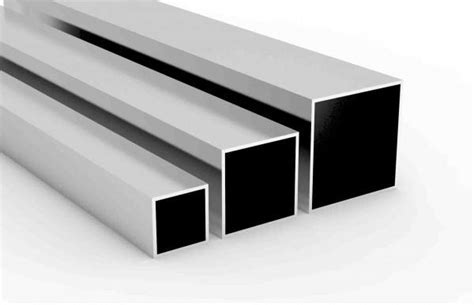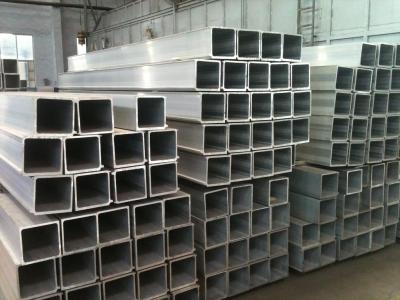How is the Strength of Aluminum Square Tube Calculated?

Aluminum square tubes are used in construction and manufacturing because of their light and strong properties. Knowing how to calculate their strength is crucial for safety and performance in any project.
This article will explain the key factors involved in strength calculations: axial strength, bending stress, moment of inertia, and pressure resistance.
By understanding these, you’ll learn how to choose the right material and design for the loads. Whether you’re an engineer, architect, or DIYer, mastering these calculations will help you make informed decisions and get results.
Related products: Aluminum tube extrusions
Square Tubing Strength Calculator: Your Essential Formulas
Calculating the strength of an aluminum square tube involves several key factors. This guide presents the essential formulas for accurate strength assessments. Understanding these formulas will help you evaluate the performance of aluminum square tubes in your projects.

Calculation of Axial Strength
Calculation Formula:
To find the axial strength of an aluminum square tube, use the formula:
Where:
- F is the axial load.
- σ is the allowable stress of the material.
- A is the cross-sectional area of the square tube.
This formula helps you understand how much load your aluminum square tube can support before it fails.
Selecting the correct material and accurately measuring the area are vital steps. If you miscalculate, you could face unexpected issues.
Knowing how to calculate shaft strength will help you avoid problems later, whether you’re building a frame or creating a design.
Calculation of Section Area
Calculating the Area:
To find the section area A of an aluminum square tube, use this formula:
Where:
- b is the side length of the square tube.
- h is the height of the square tube.
In a square cross-section, b and h are equal.
For example, if your tube has a side length of 5 inches, the area calculation is:
Calculating the section area helps you understand how much weight the aluminum square tube can support.
Think of it like measuring flour for a cake. Get it right, and your project will be solid. Get it wrong, and you might end up with a flop.
Moment of Inertia Calculation
The moment of inertia measures how well a square tube beam resists deformation under torque. It is essential for assessing the bending strength of aluminum square tubes.
To calculate the moment of inertia I, use this formula:
Where:
- b is the side length of the square tube.
- h is the height of the square tube.
A higher moment of inertia indicates that the aluminum square tube can handle more force without bending. Think of it like a sturdy book spine; a thicker spine supports more weight without bending.
Calculating the moment of inertia helps engineers and builders create strong, reliable structures. So, when you work on your next project, remember that this calculation can save you from future problems!
Calculation of Bending Coefficient
The bending coefficient measures how well an aluminum square tube can bend. This value is important for assessing the tube’s performance under load.
To calculate the bending coefficient, use this formula:
Where:
- Bending Angle is the angle at which the tube bends.
- Bending Radius is the radius of the curve formed by the bend.
- Side Length is the length of one side of the square tube.
Think of it like measuring how far a rubber band stretches. The bending coefficient helps you predict how much your aluminum square tube will flex before it fails.
Withstand Voltage Calculation
You can calculate the pressure resistance of aluminum tubes using the formula:
Where:
- P is the pressure (in MPa) that the pipe can withstand.
- S is the allowable stress (in MPa) of the material.
- t is the tube wall thickness (in mm).
- D is the outer diameter of the tube (in mm).
Key Points
- Select Allowable Stress: Choose the allowable stress σ based on the aluminum alloy’s grade and heat treatment. Different materials have different allowable stress values.
- Consider Safety Factor: Always include a safety factor in your calculations. This adds extra protection for your structure, similar to wearing a seatbelt in a car.
Strength Formula for Aluminum Square Tubing
You can calculate the strength of an aluminum square tube using the formula:
Where:
- σb is the stress in the tube.
- M is the external bending moment.
- c is the distance from the neutral axis to the outermost fiber. For an aluminum square tube, this is usually half of the side length.
- I is the moment of inertia.
This formula helps you assess bending stress in aluminum square tubes. When a bending load is applied, it shows how much stress develops in the material.
Understanding this calculation is essential for engineers and builders. It helps predict how well an aluminum square tube will perform under load. Think of it like testing a bridge before allowing traffic on it. You want to ensure it can support the weight without bending.
By using this formula, you can design structures that are safe and effective. When working on your next project, remember that calculating strength is key to making sure your aluminum square tubes can handle bending forces.
Final Thoughts
To calculate the strength of an aluminum square tube you need to consider: axial strength, cross-section area, moment of inertia, bending coefficient, and pressure resistance. Choose the right formulas and parameters according to your application and material.
Understand these calculations and material properties to make informed decisions for your projects. Accurate calculations mean reliable results whether you are designing or selecting materials.
Read more: Aluminum tubes strength and durability complete guide
Hugh Aluminum is an aluminum extrusion manufacturer in China. We produce various aluminum profile products, including aluminum tubes, T-slot profiles, decks, fences, doors, windows, and solar aluminum frames. Our large stock of aluminum building materials is at factory price.






